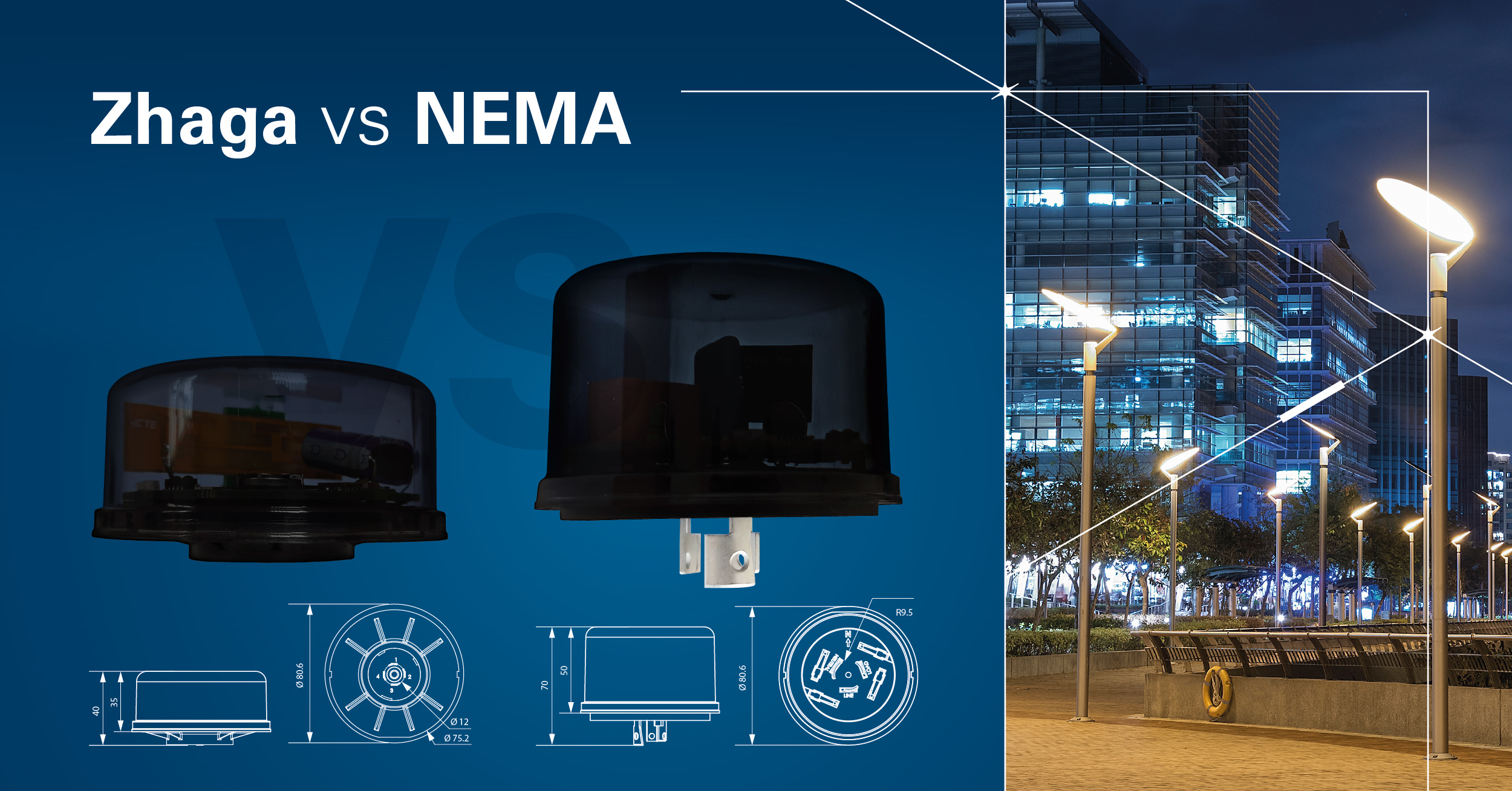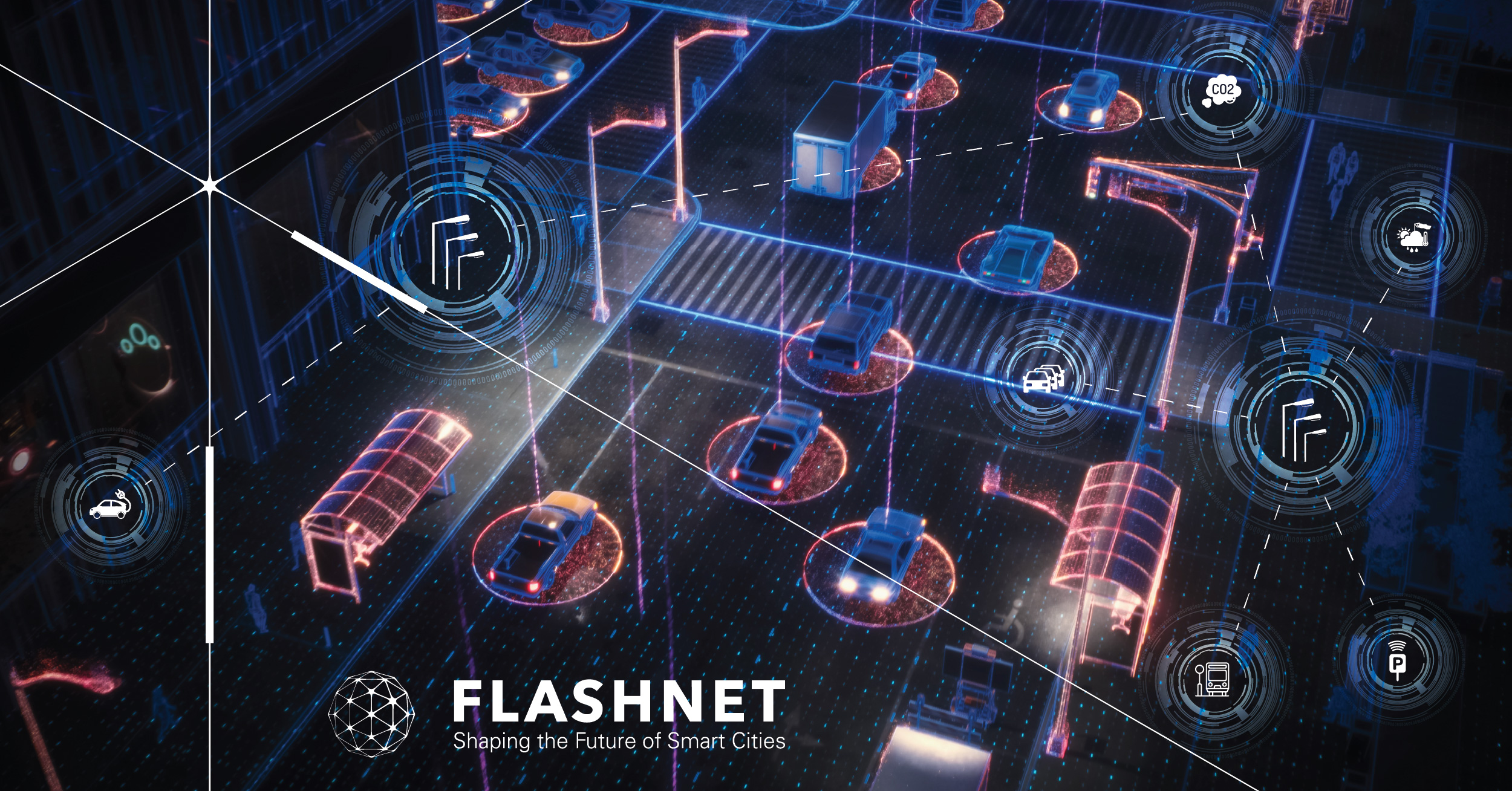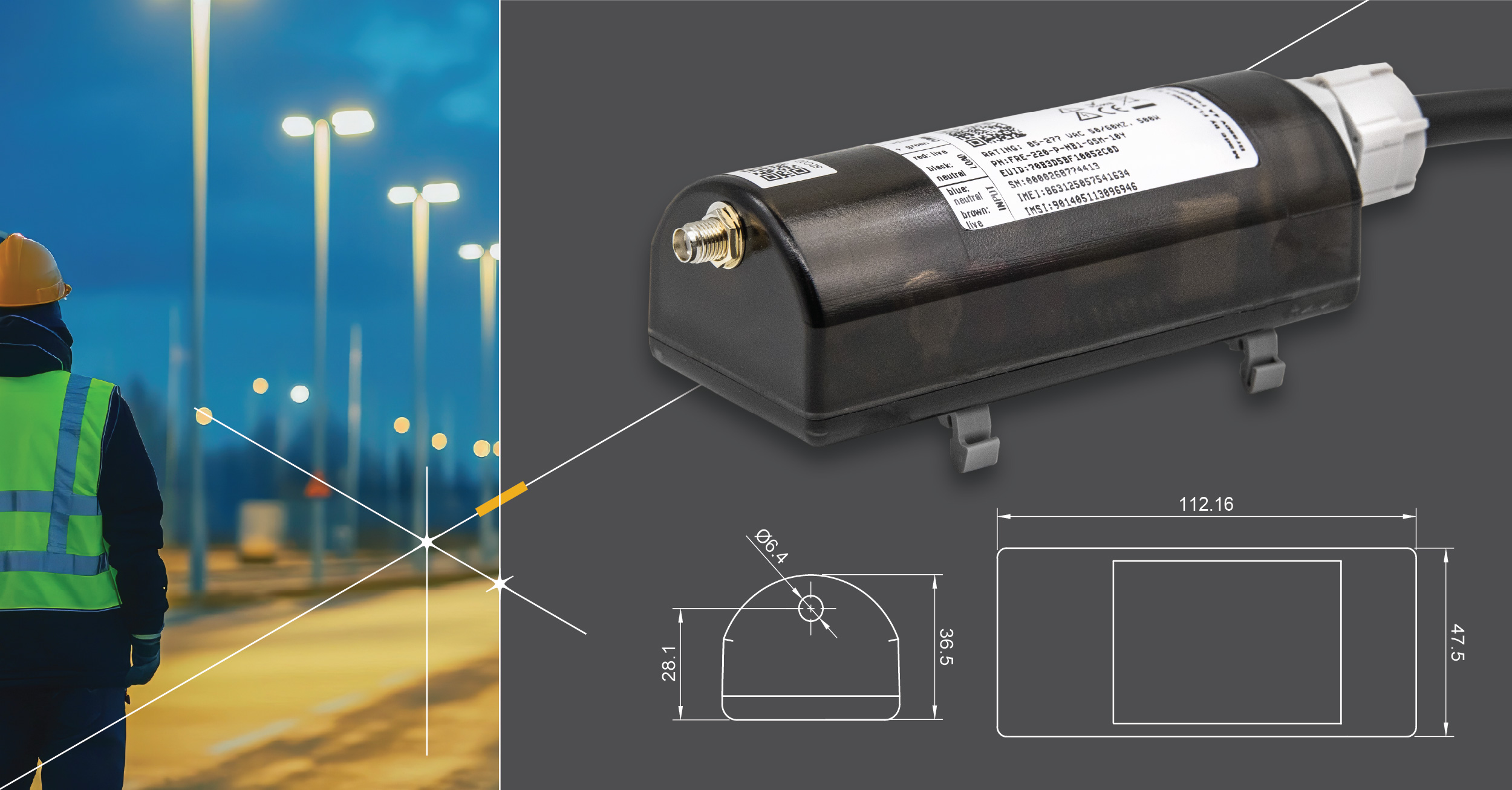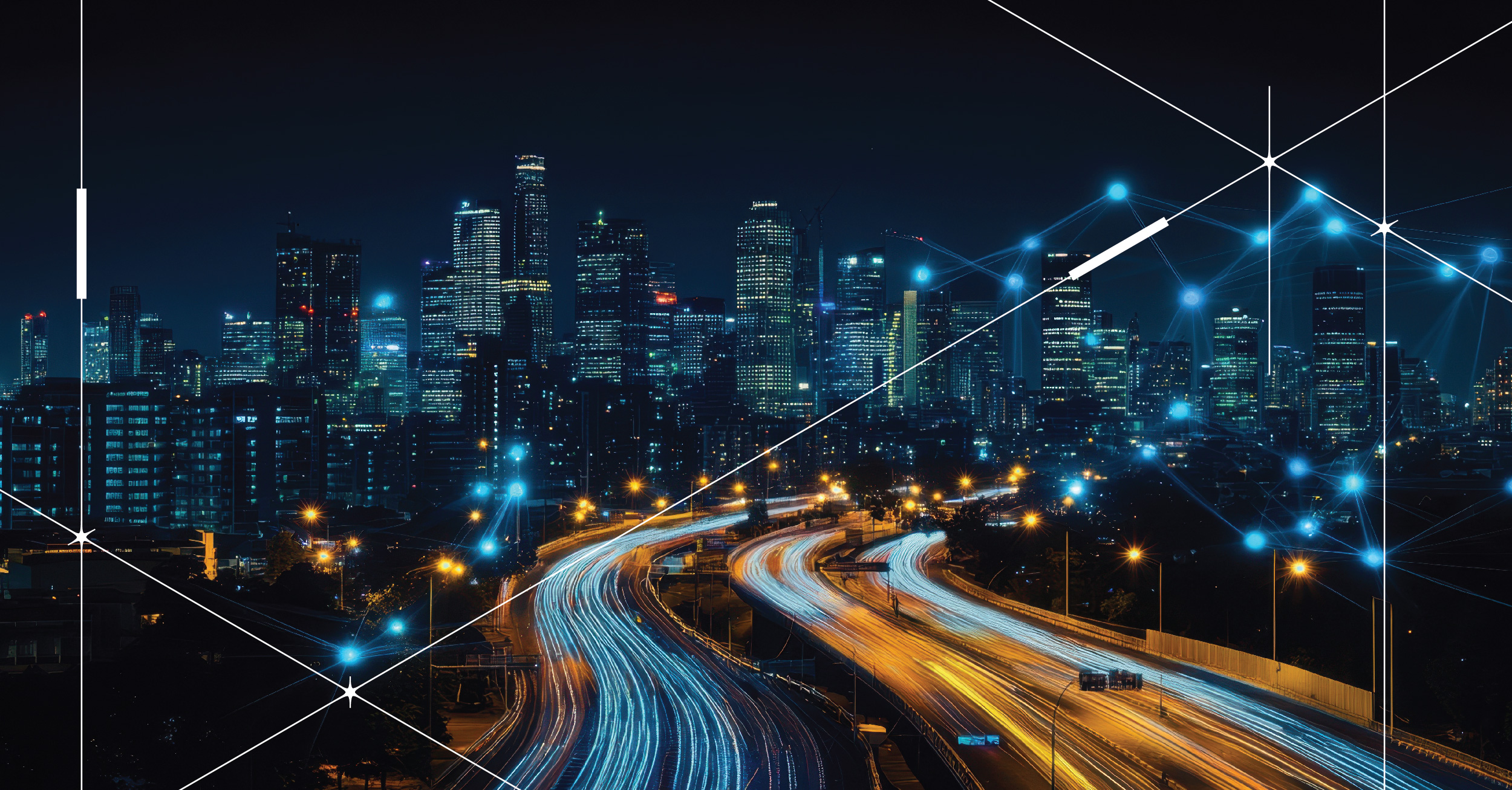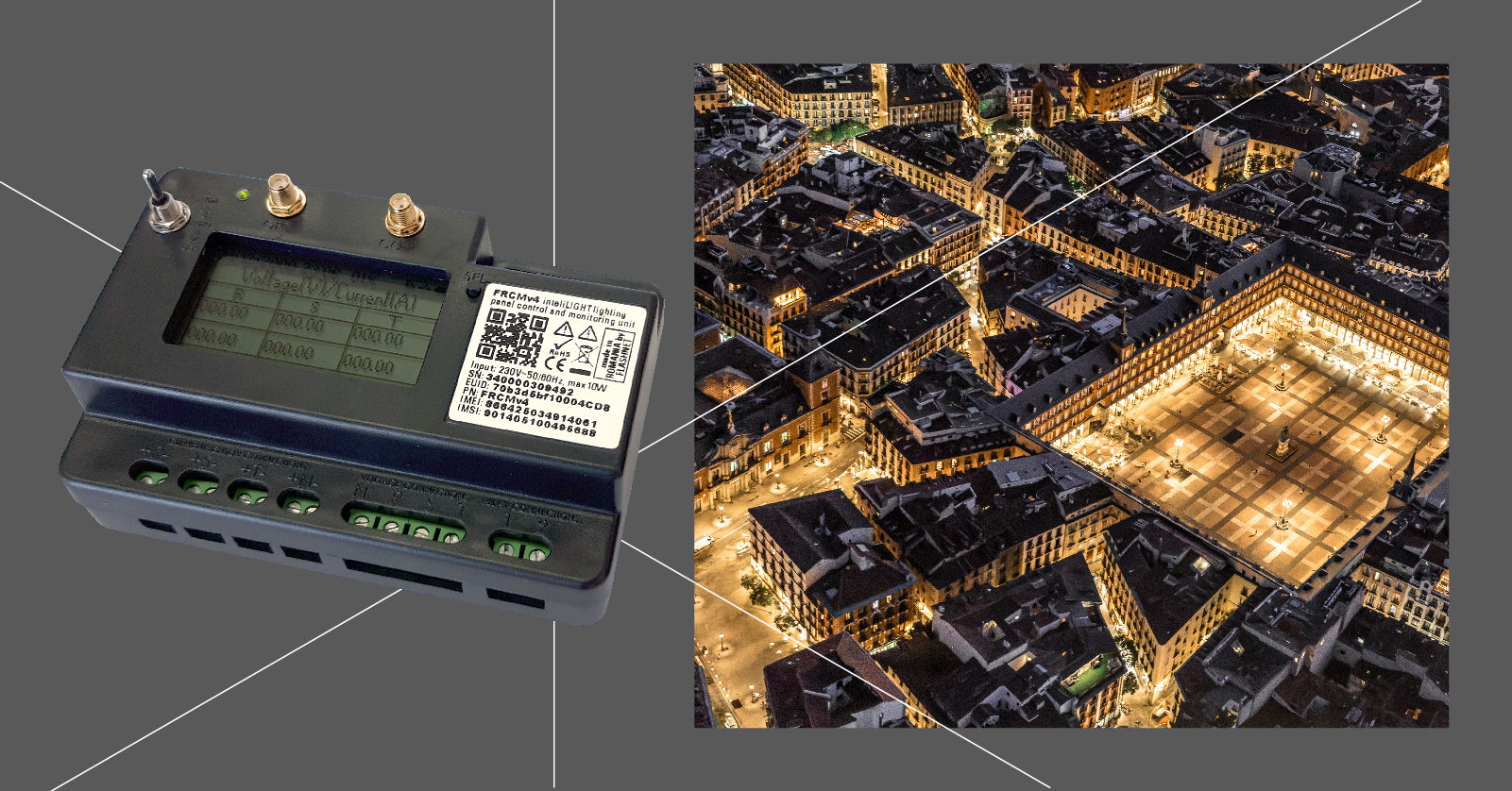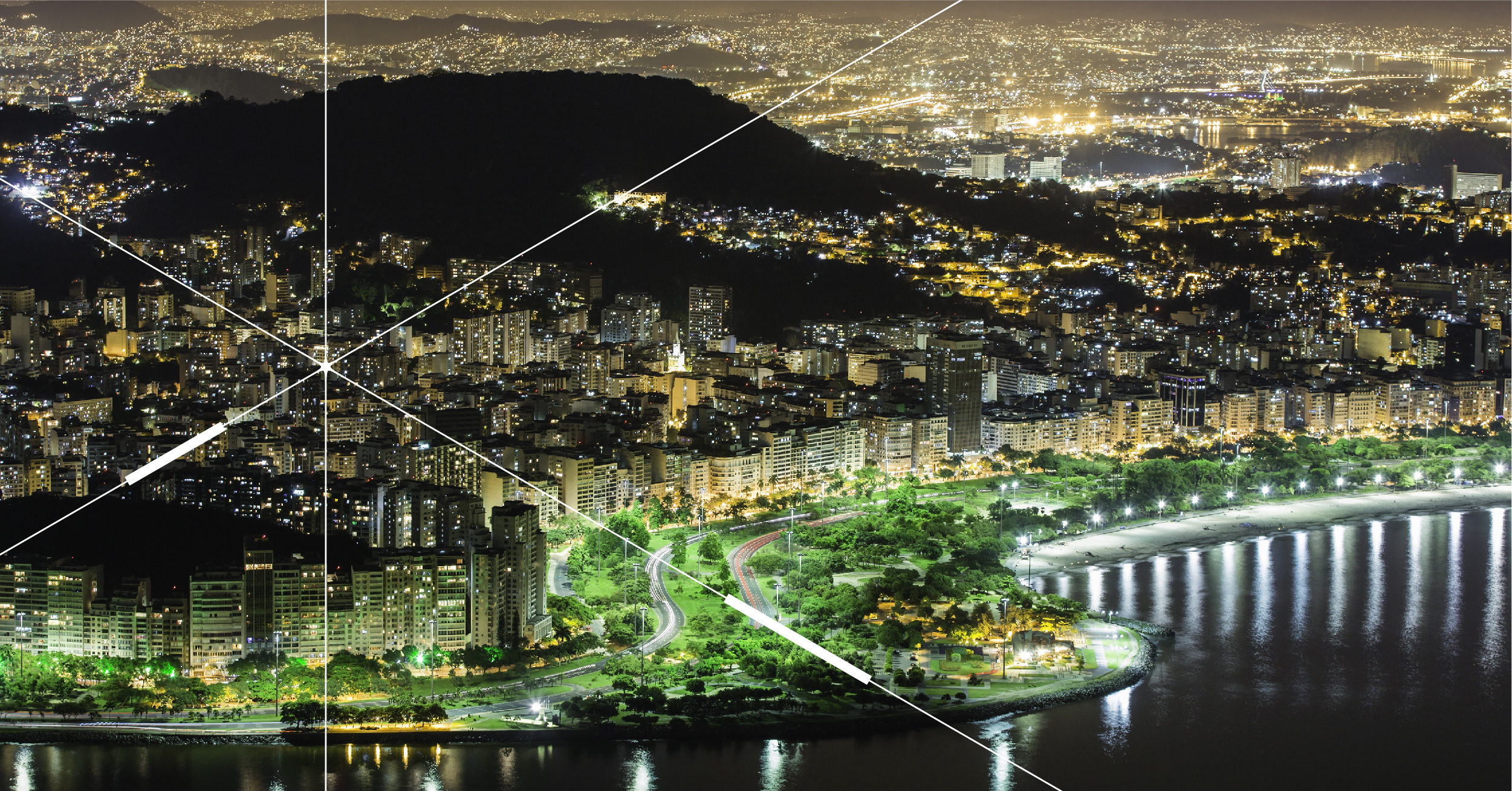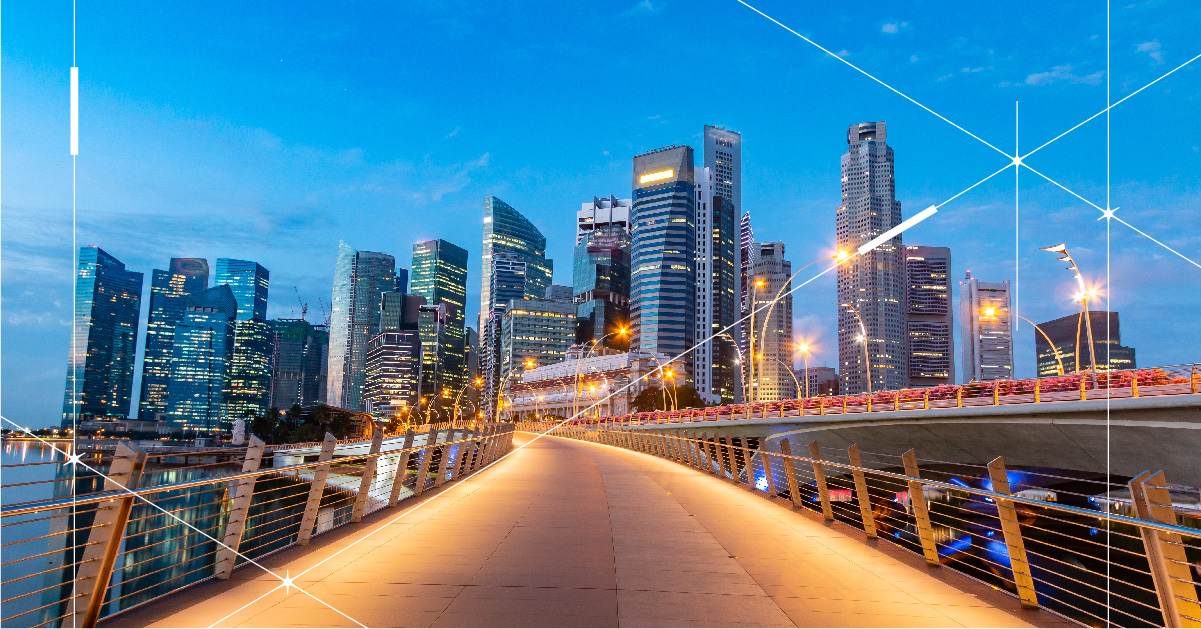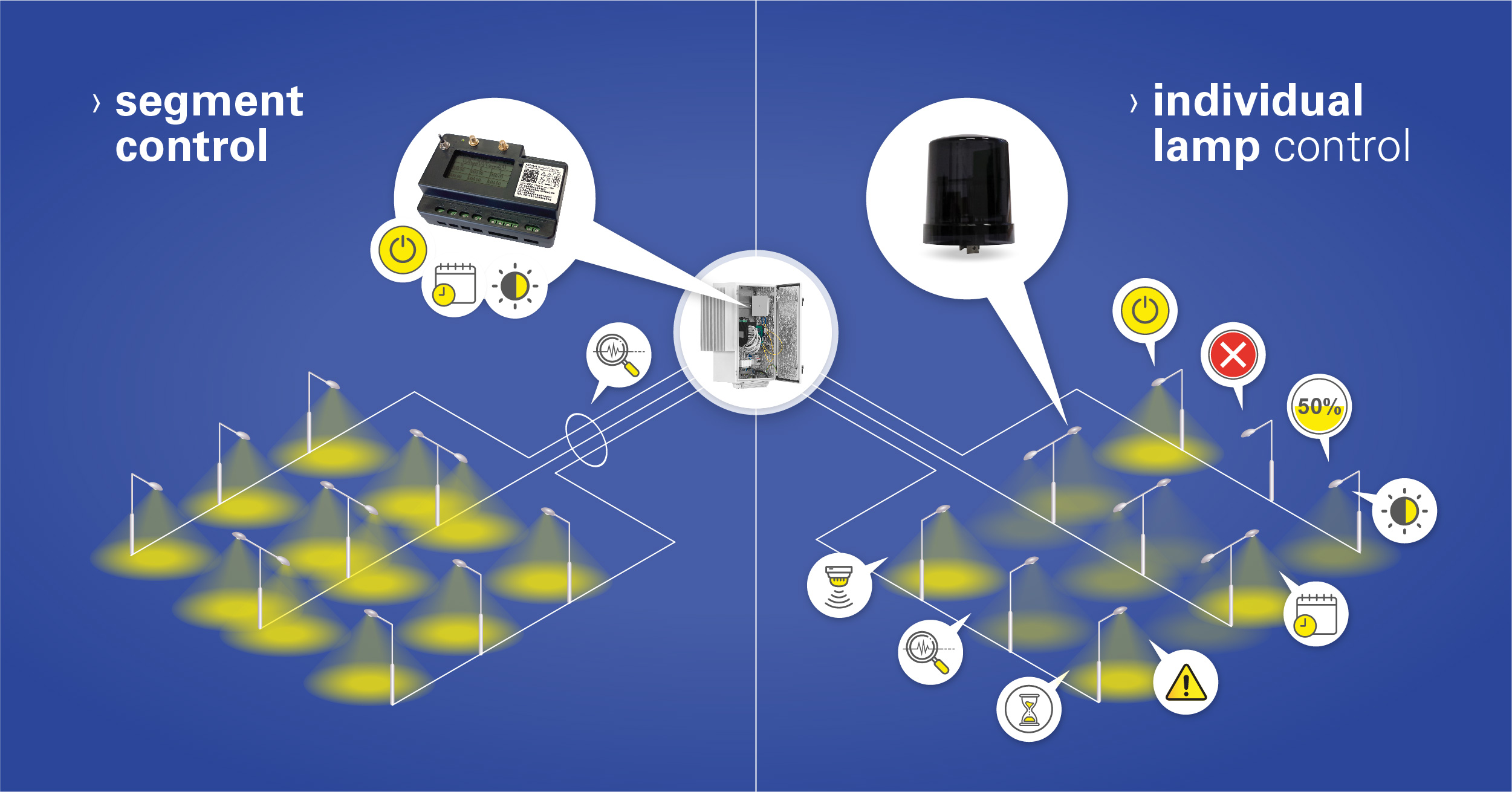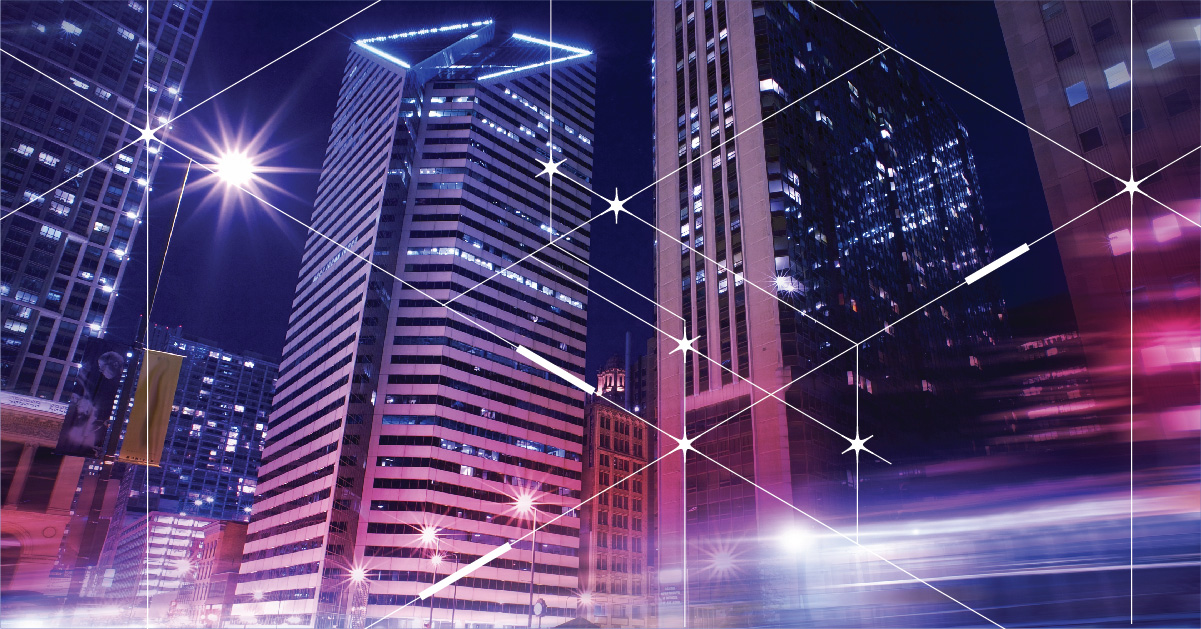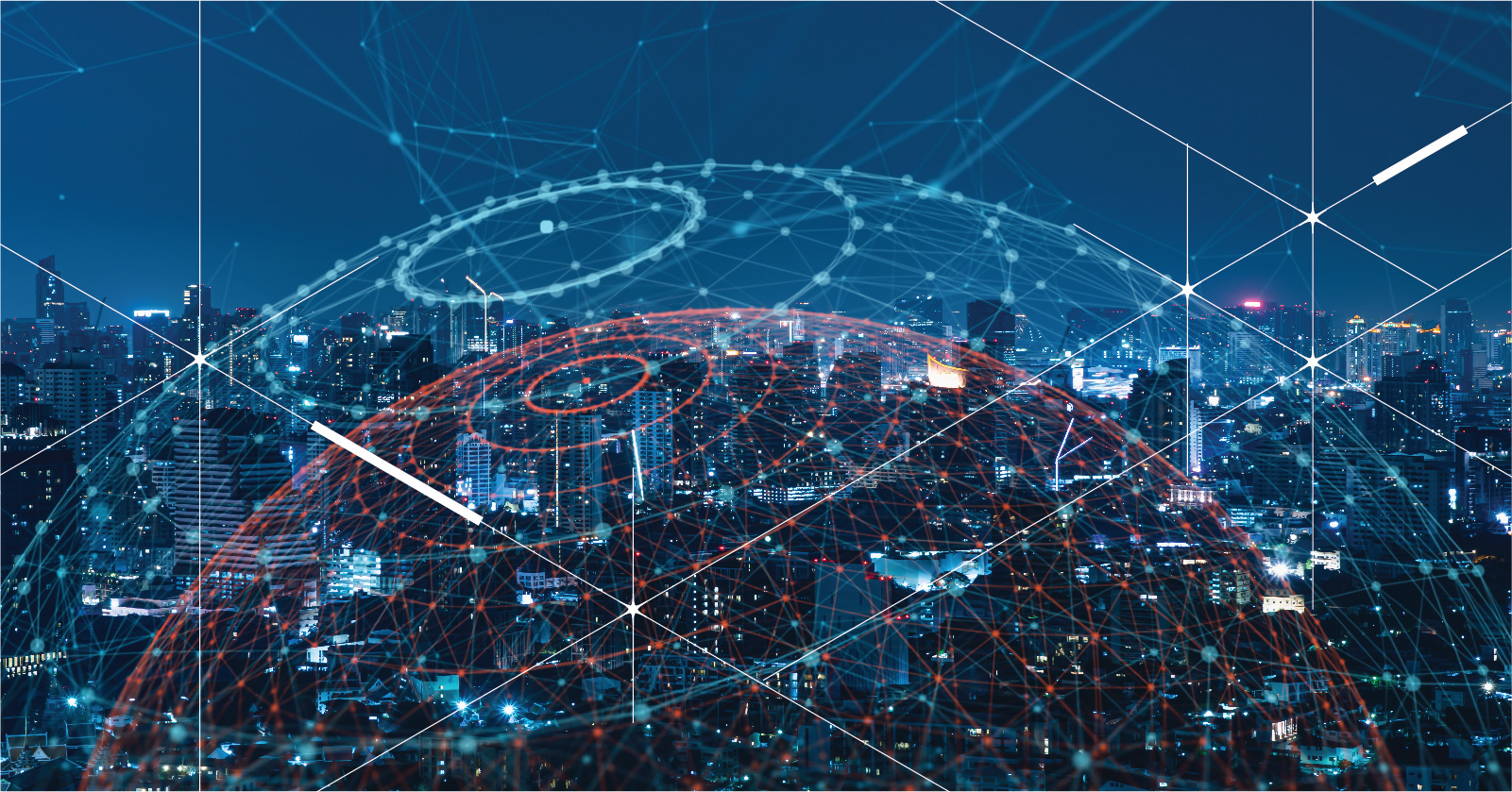Why are so many smart cities choosing LoRaWAN as the communication technology for their smart street lighting?
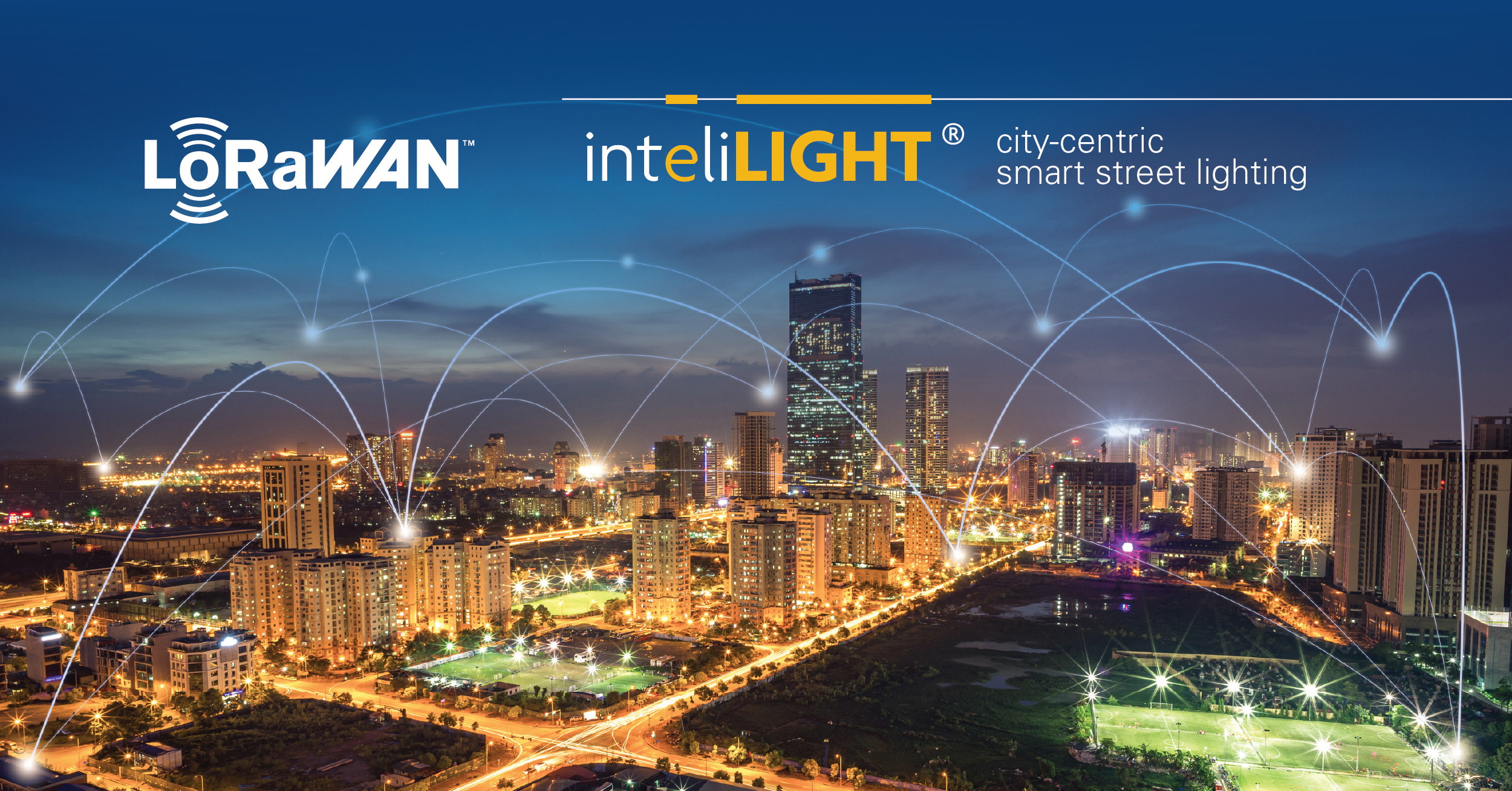
From Iceland and France to the urban expanse of Saudi Arabia, LoRaWAN is transforming street lighting infrastructure. Its blend of long-range capabilities, low power requirements and simple deployment has made it a go-to solution for many cities that focus on scalable smart street lighting systems.
What is LoRaWAN?
LoRaWAN (Long Range Wide Area Network) is a communication protocol designed for IoT applications that require long-distance, low-power data transmission. It operates in unlicensed frequency bands and uses a star topology, where thousands of devices can connect to a single base station – or multiple stations for redundancy. The technology enables bi-directional communication, is highly resistant to interference and offers the flexibility of running on either public operator networks or private city-owned networks.
Benefits of LoRaWAN communication technology
LoRaWAN is purpose-built for connecting devices in smart city environments. Its technical features directly address the demands of large-scale, energy-efficient and decentralized infrastructure. Below are some of the key benefits that make LoRaWAN a preferred communication solution for smart street lighting:
Long-range coverage
LoRaWAN can transmit data over distances of up to 15 km in rural areas, where there is low device density and minimal interference, and 2–5 km in urban environments, where buildings and higher concentrations of devices reduce range. This makes it ideal for wide-area infrastructure like roads, highways and large cities.
High scalability
The network is designed to easily support thousands of devices without complex configurations, making it well-suited for massive IoT deployments such as city-wide rollouts.
Cost efficiency
As LoRaWAN works in unlicensed ISM brands, cities avoid recurring fees for spectrum licenses. Due to its wide coverage, it also needs less gateways compared to many other RF technologies.
Interoperability
The protocol is supported by a growing ecosystem of hardware vendors, making it easier to integrate with other smart city systems.
Robust and secure
LoRaWAN uses end-to-end AES-128 encryption, built-in device authentication and integrity protection. This means guaranteed secure communication, data privacy and protection against cyber threats.
Flexible network deployment
It can be deployed on both public operator networks and private networks (by municipalities or enterprises). This gives cities and municipalities the flexibility to deploy, own and control their infrastructure.
High interference immunity
LoRaWAN is designed to provide strong resistance to interference and background noise. This ensures reliable communication even in dense urban environments with many overlapping wireless networks (Wi-Fi, LTE, Bluetooth, etc.).
When do cities turn to LoRaWAN?
When they aim to:
- Deploy large-scale projects and need a communication network that can link thousands of devices (streetlights, sensors, meters) across wide areas.
- Minimize infrastructure costs, since LoRaWAN gateways can support thousands of devices within a wide coverage area.
- Deploy smart services quickly and with minimal disruption, enabling cities to scale from pilot projects to large deployments in a short timeframe.
- Gain full ownership and control of the communication network instead of relying on third-party telecom providers for critical services like public lighting or environmental monitoring.
- Ensure long-term energy efficiency and maintenance optimization, as LoRaWAN’s two-way communication enables real-time monitoring and remote control of distributed assets.
- Operate in areas with limited or unreliable cellular coverage, where consistent communication is still essential for safety and operational continuity.
- Connect infrastructure across both dense urban areas and dispersed zones (e.g. highways, industrial parks, or suburbs), where other networks may be less efficient or more costly.
inteliLIGHT: Smart street lighting powered by LoRaWAN
Street lighting is one of the most visible and resource-intensive services a city manages, which makes it an ideal application for LoRaWAN. It’s highly visible, it generates immediate savings, and it creates a ready-made network that can later be used for other services.
Flashnet’s inteliLIGHT solution was designed with this in mind. By combining advanced lamp controllers with LoRaWAN connectivity, it gives municipalities the ability to monitor, dim and manage each streetlight in real time. This not only reduces energy consumption and maintenance costs but also ensures reliability and safety in urban areas, highways and dispersed environments where communication challenges are high.
In practice, inteliLIGHT® deployments demonstrate how LoRaWAN can transform a critical piece of infrastructure into a smarter, more efficient system. And once that foundation is in place, the same LoRaWAN network can extend beyond lighting, opening the door to a wide range of smart city applications.
LoRaWAN beyond street lighting, a smart city platform
LoRaWAN’s value lies in more than powering smart street lighting. It’s also about its ability to serve as a unifying communication backbone for smart city applications.
Once a LoRaWAN network is deployed for street lighting, the same infrastructure can support other use cases such as smart parking sensors, connected waste bins, environmental monitoring, etc. This multi-domain approach reduces deployment costs and interventions and accelerates the city’s digital transformation.
Flashnet’s inteliCITY platform is built to harness this scalability. Acting as a central management system (CMS), it integrates multiple IoT verticals through open standards like TALQ and API connections, enabling municipalities to retain full data ownership, gain real-time operational insights and avoid vendor lock-in.
By leveraging LoRaWAN’s flexibility and adopting a platform-based approach, cities can transition from isolated pilot projects to interconnected IoT ecosystems that serve multiple domains. This shift enables better use of existing infrastructure, fosters interoperability across systems and ensures that investments in communication networks generate value far beyond their initial application.
Flashnet’s LoRaWAN deployments
Flashnet has successfully implemented its inteliLIGHT® solution using LoRaWAN-based communication networks in diverse environments, from remote highways to dense urban areas, proving the protocol’s flexibility and reliability in real-world conditions.
These implementations showcase how inteliLIGHT®, powered by LoRaWAN, enables cities to modernize their lighting infrastructure efficiently and cost-effectively – from France, Italy, and Greece in Europe to major deployments across the Middle East, regardless of geographic or operational constraints.
Lighting Highways in Greece – A1 Motorway Project
The A1 motorway is Greece’s second-longest motorway, stretching over 550 kilometers and connecting Athens to Thessaloniki. Its sheer length, remote areas and low lighting fixture density made traditional communication networks impractical. To address these challenges, Flashnet, together with Sirecled, implemented a cutting-edge smart street lighting solution powered by LoRaWAN and inteliLIGHT® technology.
This large-scale deployment stretched across 300 kilometers of highway, with inteliLIGHT® controllers embedded into new LED luminaires and supported by just 30 LoRaWAN® base stations. The result was a robust, private IoT communication network that could cover long distances with minimal infrastructure investment.
Through LoRaWAN and inteliLIGHT®, Greece’s A1 motorway benefits from:
- Real-time status reporting – allowing operators to instantly detect outages or irregularities across the 300 km highway, ensuring uninterrupted lighting for road safety.
- Remote control and dimming – enabling flexible lighting adjustments (ON/OFF and dimming) based on traffic flow, time of day, or weather conditions, significantly reducing energy consumption.
- Preventive maintenance alerts – helping maintenance teams predict and address potential failures before they occur, minimizing downtime and extending the lifespan of the lighting network.
“Flashnet’s flexibility and availability for a custom approach meant a lot to us and LoRaWAN™’s coverage is impressive. It is hard to imagine a reliable private communication network that can be deployed faster and more affordable than LoRaWAN” said Mr. Evangelos Bardis, CEO of Sirecled.
The project showcased how LoRaWAN could enable smart infrastructure even in remote, low-density areas.
Modernizing Public Lighting in Jeddah
In Saudi Arabia’s bustling city of Jeddah, modernization meant scale and reliability. As part of its push toward smarter urban infrastructure, the city partnered with Flashnet and Saudi Delta Group to implement over 5,700 inteliLIGHT® smart street lighting controllers powered by LoRaWAN® communication technology. To tackle the challenge of Jeddah’s demanding climate and frequent power fluctuations, solar-powered UPS systems were integrated to keep the LoRaWAN network and gateways operational even during outages.
Through LoRaWAN and inteliLIGHT®, Jeddah’s municipality gains:
- Real-time monitoring and fault detection – enables the municipality to quickly identify and address issues before they escalate.
- Optimized dimming schedules – ensures energy is used efficiently, maximizing savings.
- Streamlined maintenance operations – reduces unnecessary field interventions and improves response times.
- Cost reduction and extended asset lifecycle – by minimizing energy waste and preventing equipment wear through proactive management.
With its wide-area coverage and low power requirements, LoRaWAN enables Jeddah to explore additional IoT applications – from environmental sensors to public safety monitoring – without relying on public telecom providers.


